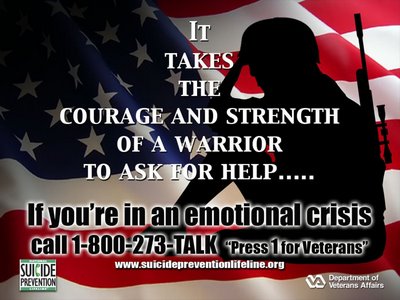
Although the suicide rate has climbed measurably across all sectors of the military over the past few years, top Army and Marine Corps officials on Tuesday proposed several solutions to erase the social stigma associated with mental health illnesses and to combat the less visible wounds of war.
Responding to a congressional committee’s concerns about an NPR report, which identified various deficiencies in the Army’s mental health program, Peter W. Chiarelli, the Army vice chief of staff, defended the Army’s current policies and promised to engage the military’s vulnerable youth.
While the Army is reporting a decline in suicides among active duty soldiers, suicides among reservists who have returned home and aren’t on active duty totaled 53 this year through mid-June, up 26 percent from the comparable period last year. Suicides among active duty Army dropped 30 percent through mid-June from a year earlier, to 62.
Suicides overall increased by 26 percent from 2008 to 2009, while suicides among Marines have more than doubled since 2005.
The ability to properly diagnose mentally ill soldiers will require a more fundamental shift beyond mere medical practice, officials concluded.
The priority for the military, Chiarelli and Marine Corps assistant commandant James F. Amos said, is to change a military culture that’s made soldiers and Marines reluctant to seek help from mental health professionals for fear that doing so could damage their careers.
Chiarelli advocates the use of Web-based health care services, which would give every soldier a 30-to-40 day session with a behavioral health specialist using the Internet. Behavioral health studies, Chiarelli said, have demonstrated that younger soldiers prefer this sort of online counseling to face-to-face encounters.
“This gets at stigma issues,” Chiarelli said. “I really think this is something that will fix this now.”
Chiarelli added that the Web service also would help address the high rate of suicides among reservists, who are frequently off on their own in rural communities without the help of health professionals, within five to seven days of their departure from service, he said.
This attempt to monitor reservists after discharge may prove too ambitious, however, as the military has struggled to keep track of its veterans for years.
The Department of Veterans Affairs and various National Guard units around the country face the difficult task of checking on potentially war-torn veterans who scatter across rural communities and can be hard to track down.
Hundreds of thousands of troops have deployed to Afghanistan and Iraq during the past nine years. While it’s relatively easy to tally casualties, the psychological toll on soldiers is harder to quantify.
Chiarelli acknowledged that, in addition to the emotional trauma caused by multiple tours, insufficient evaluations of mental health during the demobilization process and “lack of human interaction with other soldiers” in the days following discharge have probably contributed to suicides.
Although some doctors are currently resisting this push toward a more technology-oriented approach, Chiarelli said a standardized program for all homeward-bound soldiers will persuade its current detractors.
The main obstacle to implementing online behavioral health care right now is procedural, Chiarelli later said in an interview with McClatchy.
“Ideally we would provide this to an individual in their home, and tap into someone who could provide psychotherapy, if you believe in it,” he said. “The problem you have doing it online is: you cannot be in your home in North Dakota and necessarily be treated by a doctor in California online, because that individual is not credentialed or privileged to do that in North Dakota.”
Even if perfected, however, the techno-savvy approach to mental health still does not entirely overcome long-lasting problems of combat, Amos said.
“We understand that this stigma is real and we have to set the conditions to get around it,” he said. “I’m not convinced that our middle-grade staff NCOs and our young officers have the same appreciation. I think it’s because they’re younger, they’ve been exposed to it less. But this is a leadership problem we’re working on.”
Even as military leadership attempts to stir change in a culture that has prioritized visible, physical wounds ahead of less easily detectable psychological trauma, its ability to initiate effective preventive reform remains uncertain.
“Bottom line … there is a confluence of stressors that cause suicides, but no single panacea to prevent them,” Chiarelli said. “There is no one solution to the problem.”
Read more: http://www.kansascity.com/2010/06/22/2036705/military-suicides-remain-high.html#ixzz0rfy24bYwBy Andrew Seidman / McClatchy Newspapers
ATTENTION READERS
We See The World From All Sides and Want YOU To Be Fully InformedIn fact, intentional disinformation is a disgraceful scourge in media today. So to assuage any possible errant incorrect information posted herein, we strongly encourage you to seek corroboration from other non-VT sources before forming an educated opinion.
About VT - Policies & Disclosures - Comment Policy



